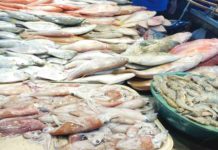SOME 980 dairy animals are dying every year since 2013, according to the Commission on Audit (COA) in its Performance Audit Report on Herd Build-Up and Carabao Development Programs released this month.
The COA said the National Dairy Authority (NDA) recorded P346 million worth of 2,614 animal deaths from 2013 to 2018, or an average of 436 each year.
On the other hand, the Philippine Carabao Center (PCC) posted 3,284 mortalities or an average 547 each year for the same period, resulting in at least P471 million worth of losses.
The leading causes of mortalities were fasciolosis, Foreign Body Syndrome, and bloat/surra/digestive reproductive problems due to non-provision of proper animal health services, herd management problems, as well as non-provision of housing facilities and traditional farming practices.
State auditors noted that NDA resorted to importation of superior breed animals to substantially boost the local dairy industry, but the plan did not go well.
While the NDA was able to import 3,060 animals as of Dec. 31, 2018, such figure is still short of the target number of imported dairy animals by 74 percent due to unfunded importation plan, failed bidding caused by absence of suppliers, unavailability of dairy stocks and foot and mouth disease issues.
“Importation efforts of the NDA were made without comprehensive research on the desired breed acclimatized to build up even if the Dairy Training and Research Institute is one of the members of the Dairy Industry Board,” COA pointed out.
At least 25 percent of the dairy animals imported by the NDA under three batches also died due to pneumonia, downer and septicemia, while PCC’s importations of 2,509 heads of Italian Mediterranean Buffaloes as substitute to the unavailable Brazilian Murrah Buffalo breed were delivered in years 2013 and 2014 even if the procurement process for those started in 2010.
“The objectives of increasing the local milk sufficiency were not attained primarily due to insufficient number of dairy animals. The yearly local milk sufficiency levels for 2013 to 2018 have remained at a little over one percent, making the country 99 percent dependent on dairy importations,” COA said.
COA, citing NDA records, noted that the number of dairy animals increased by an annual average growth rate of 11 percent from 28,014 in 2012 to 52,188 in 2018 – good for producing 23.69 million liters of milk or 1.3 percent of the national dairy requirement of 1.77 billion liters.
State auditors, however, lamented that this accomplishment is not enough.
“The number of dairy animals is 74 percent short of the 198,977 target while milk production is 54 percent short of its 2.8 percent target,” COA said.
It is also found that restrictions in crossbreeding of Italian Mediterranean Buffaloes did not provide the intended boost in fast tracking the increase in the number of genetically improved buffaloes, on top of the fact that PCC has not been able to implement its planned importation since 2014 due to budget constraints.
In addition, the COA report revealed that NDA was only 42 percent producing calves out of the animals inseminated and bred – short of the agreed 60-percent success rate.
The PCC was no better since its 22 percent success rate in artificial insemination is also short of the 35 percent target while its bull breeding services had been declining along with the calf drop despite increasing number of bulls loaned out.
Also, 31 percent of the target artificial insemination services of PCC were not served due to insufficient artificial insemination technicians.
COA added that due to “foregoing gaps in the implementation of Herd Build-Up and Carabao Development Programs and with additional demand created by the National Feeding Program in addition to annual increase in population, it is unlikely that the dairy industry through the initiatives of NDA and PCC could attain the milk sufficiency target by 2022.”
In its response to COA’s findings, NDA argued that the performance evaluation criteria used by the state auditors were not mutually agreed upon.
COA, however, noted that the criteria used by the team were “derived from the Dairy Road Map targets agreed with Governance Commission on Government Owned and Controlled Corporations and Annual Reports which were all internal management documents.
The PCC, for its part, reasoned out that the absence of private investment makes the growth of the domestic dairying solely dependent on the limited subsidy from the government since the plans and programs of the concerned agencies expected to contribute to domestic dairy development have been working under an environment where investment by the private sector is not conducive due to issues on competitiveness, profitability and sustainability.
In closing, the PCC commented that the intent to develop the domestic dairy industry will rely on public investment initially as the main focus is the smallholders.
“In the absence of appropriate policy environment, the pace of development is dictated by the magnitude of public funding support,” PCC added. (GMA News)



